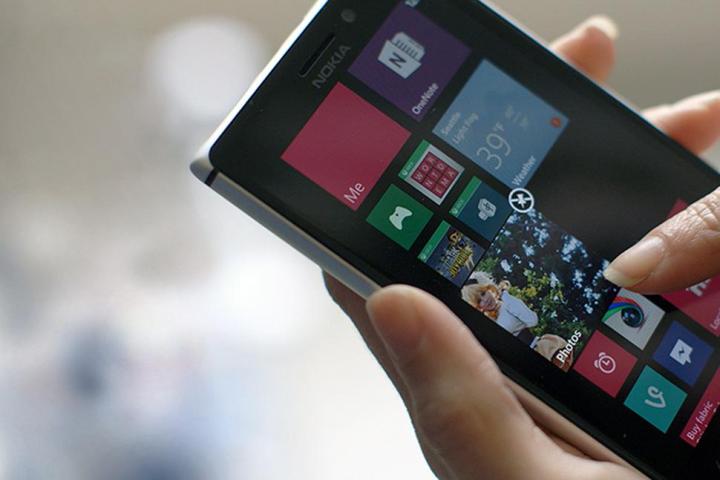
Is the third time the charm?
Since Microsoft introduced its first “smartphones” way back in 2000 with Windows Mobile, the company has started over with its mobile products three times in total. The first big shift came in 2010, when it dumped Windows Mobile for the Zune-like “Windows Phone” to compete with Apple’s iPhone and Android devices by Google. For a few years, the company tried to temporarily push Windows Mobile to compete alongside Android and iOS, but Microsoft quickly gave up on projects like Windows Mobile 6.5.3 and the Windows Marketplace in favor of Windows Phone 7, which was a ground-up radical redesign of its mobile operating system that took heavy design cues from Microsoft’s failed iPod competitor, the Zune. Windows Mobile was deprecated, and its thousands of applications and millions of users were abandoned.
Next, Microsoft shifted its plans for mobile in 2012 with the launch of Windows Phone 8. Due to Windows Phone 7’s limited success, Microsoft essentially started over for its app developers and users alike, requiring most developers to rebuild their apps and requiring most users buy new smartphones compatible with Windows Phone 8. This left many early adopters high and dry with limited support as Microsoft decided to add a host of features and requirements that Windows Phone 7 devices just couldn’t handle.
Windows Mobile was deprecated. Its thousands of applications and millions of users were abandoned.
A good mobile OS is about consistency
If there’s one thing Microsoft could learn from Google and Apple, its that you try to bring consistency and regularity to your smartphones. As much as Apple has been criticized for not changing much about its home screen UI since launching the iPhone in 2007, this also remains as one of the most identifiable features of the iPhone. Android has evolved tremendously as an OS, but updates come incrementally, allowing users in the market to update when they’re ready. Microsoft has instead chose to force change to its followers, requiring major device and software purchases to keep up with its own vision for mobile.
Microsoft seems unable to decide what its mobile experience should be like. We thought it had with Windows Phone 8 and 8.1, but Microsoft is back to the drawing board again. The company has pushed aggressive change for its products, but that doesn’t work well for mobile devices. People want consistent and reliable software for their smartphones, and Microsoft is losing the fight in reliability to Apple and Google, who have both spent years building trust with their users.
A new team is the least Windows Phone needs
With Windows 10 coming to smartphones, tablets and PCs alike, the team that has developed Windows Phone over the past four years is now merging into the overall team that develops Windows as a product. This is a decision months in the making, with Microsoft CEO Satya Nadella himself expressing back in July the goal to build Windows as one platform for all devices.

That doesn’t mean Windows should stop caring about phones. In an email to employees, Nadella also said that the world is becoming mobile-first and cloud-first, though this move from Windows Phone 8.1 to Windows 10 seems to focus on the opposite. We’re not sure how Microsoft is merging the remnants of the Windows Phone team into the Windows 10 team, but there’s no longer a clear distinction between the two.
As smartphones border the size and capabilities of tablets, how will Microsoft ensure a balance is kept between the goals for Windows tablets and Windows smartphones? We’re having a hard time seeing clarity in this mission, further complicated a once clear relationship between Windows and Windows Phone. This is especially concerning because we’ve finally started seeing Windows Phone updates and progress toward building a unique user experience. With Windows 10, all of this is up in the air once again.
You’re driving app developers and users crazy
Microsoft has good intentions with merging Windows into its mobile platform. Mostly it’s part of the company’s plans to develop a universal app concept so that applications on the Windows Store can run on as many devices as possible. This isn’t the first time that Microsoft tried merging its developers across platforms, and depending on the capabilities of Microsoft’s future SDKs for all platforms, this could either greatly help development for Windows smartphones, or outright destroy it.
Building an SDK (software development kit) that will power applications from four inches to 40 inches is a tall order. Unfortunately, Microsoft has done little in its Windows Store to prove it can effectively build apps across such a great scale. While it may be easy to build consistent design across tablets, laptops, and PCs, finding a way to balance that with the design of a smartphone will be a challenge. At best, Microsoft will encourage a single, robust app store for all of its products. At worst, Windows smartphone owners will yet again be left behind as developers focus on the far more popular desktop version of the OS. Along the way Microsoft will certainly anger users and developers looking for a consistent OS experience.
Microsoft has tried everything to win over customers to its mobile products from offering cheap phones to paying developers to port their apps. This move from Windows Phone to Windows 10 may simply reverse its efforts to win over developers and users to its mobile OS. We’ll have to wait and see what Microsoft announces in the coming weeks to see the true extent of this merger between Windows and Windows Phone. Whatever happens, Microsoft needs to decide once and for all the future of its mobile platform, or it may alienate the few loyal users it still has.


